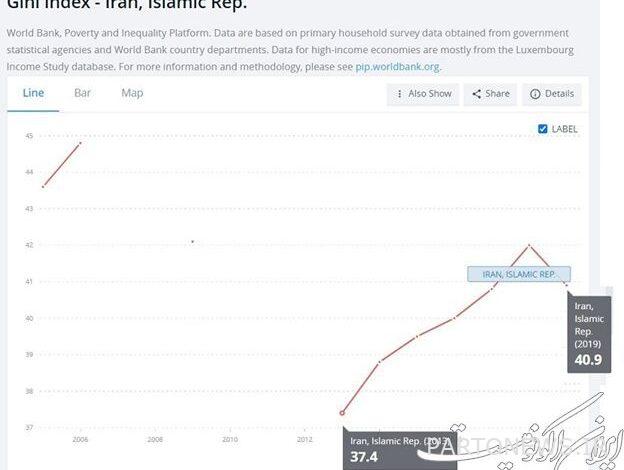The story of the World Bank about the increase of the Gini coefficient for 5 consecutive years in the last government

According to Iran Economist, one of the indicators that shows the income situation at the level of society is the Gini coefficient. The Gini coefficient is one of the indicators that can be used to measure the state of income distribution in a society.
The Gini coefficient includes figures between 0 and 100, and the higher this figure is, the greater the income gap and inequality in a country. In other words, if all members of the society have the same income, the Gini coefficient is equal to zero, and if all the income reaches only one person, the Gini coefficient is 100, which will be the worst possible situation.
The analysis of the World Bank statistics on the changes in the Gini coefficient in Iran shows that during the years 2014 to 2019, which coincided with the activities of the previous government, the Gini coefficient has grown in Iran, which means an increase in the income gap in Iran during the years of the administration of the previous government over the country. Is.
The 11th government took over the Gini coefficient of 37.4 units in 2013 and increased this figure consecutively in 2014-2018.
Iran’s Gini coefficient has increased from 37.4 units in 2013 to 38.9 units in 2014, 39.5 units in 2015, 40 units in 2016, 40.8 units in 2017 and 42 units in 2018. .
Based on this, for 5 consecutive years, the Gini coefficient in Iran has had a sharp upward slope and has experienced a growth of 12%, which shows that the policies of the previous government were mostly aimed at securing the interests of the wealthy groups and took wealth and property from their pockets. The middle class and the poor have led to the pockets of these groups.
In 2019, after 5 consecutive years of rising, the Gini coefficient in Iran decreased a bit and reached 40.9 units, which was due to the increase in cash subsidy after the correction of gasoline prices, which increased the purchasing power of low-income groups.

